-

Aug
31
Interpretive Summary: Dairy groups comment on the FDA’s draft guidelines for plant milk-alternative labeling
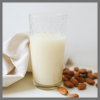
The National Milk Producers Federation (NMPF) and the International Dairy Foods Association (IDFA) have submitted public comments on the United States Food and Drug Administration’s (FDA’s) draft guidance for plant milk-alternative labeling.
Read more
-

Aug
31
Interpretive Summary: FDA request input on antimicrobial use in animals
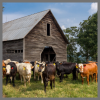
The United States Food and Drug Administration (FDA) is seeking public comments on a new report, which discusses a potential framework for establishing a public-private partnership (PPP) to collect and analyze antimicrobial use (AMU) data from food-producing animals. The report was created for the FDA by the Reagan-Udall Foundation (the Foundation) and summarizes the work completed over a multi-year cooperative agreement funded by the FDA.
Read more
-

Aug
31
Interpretive Summary: Lawsuit filed against Massachusetts’ Question 3
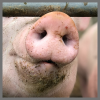
A group of pork producers have filed a lawsuit in Massachusetts against the Act to Prevent Cruelty to Farm Animals (Question 3). Passed by voters in November 2016, Question 3 imposes confinement requirements on out-of-state pork producers and prohibits the sale of pork meat within the state from offspring of an animal confined in a manner inconsistent with Massachusetts' requirements, regardless of where in the nation the animal was raised.
Read more
-

Aug
31
Interpretive Summary: New bill proposes senior nutrition taskforce

A new bipartisan bill has been introduced to improve nutrition in older adults. The Senior Nutrition Taskforce Act of 2023 would establish an interagency taskforce to address hunger and help seniors, as well as adults with disabilities, better access healthy foods.
Read more
-

Aug
31
Interpretive Summary: Preserving Family Farms Act reintroduced

United States Representatives Jimmy Panetta (D-CA) and Mike Kelly (R-PA) have reintroduced the Preserving Family Farms Act of 2023. The bill would modify tax law, allowing farmers and ranchers to pay estate taxes based on the value of their land for agricultural use.
Read more
-

Aug
31
Interpretive Summary: Some of the Endangered Species Act’s listings will soon be modified
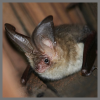
Two resolutions to nullify the Biden Administration’s Endangered Species Act listings have passed the Senate and the House of Representatives and will now go to the President’s desk for signature. The two listings would nullify the lesser prairie chicken listing and the northern long-eared bat listing. Matters of the Endangered Species Act are typically left to the United States Fish and Wildlife Service and the National Marine Fisheries Service, to decide which animals and plants to list as endangered or threatened and how to rebuild their populations.
Read more
-

Aug
31
Interpretive Summary: The Farmland Security Act of 2023 is introduced

United States Senators Tammy Baldwin (D-WI) and Chuck Grassley (R-IA) introduced a new bill, designed to increase the transparency and oversight of foreign ownership in America’s agricultural industry. The Farmland Security Act of 2023 builds on the Farmland Security Act of 2022, by ensuring that all foreign investors who buy American agricultural land report their holdings and strengthens the penalties for those who evade the required filing.
Read more
-

Aug
31
Interpretive Summary: US to provide relief for Ukrainian farmers

Through the Agriculture Resilience Initiative (AGRI)- Ukraine, the United States announced it will provide $250 million in aid to Ukrainian agriculture producers and farmers. AGRI- Ukraine is an initiative started last year to support Ukrainian agriculture exports and combat global food security issues exacerbated by the Russian invasion.
Read more
-

Aug
31
Interpretive Summary: USDA to increase competition in agriculture sector

The United States Department of Agriculture (USDA) has announced a partnership with attorney generals in 31 states and the District of Columbia to enhance competition and protect consumers in food and agricultural markets, including in grocery, meat, and poultry processing, and other markets. The partnership will assist state attorneys general in tackling anticompetitive market structures in agriculture and related industries that are raising prices and limiting choices for consumers and producers.
Read more
-

Aug
24
Interpretive Summary: The effects of stocking density on behavior and biological functioning of penned sheep under continuous heat load conditions

There is a high demand for Australian sheep to be exported to the Middle East, and for live export voyages which depart during an Australian winter, heat, and humidity increase rapidly as ships cross the equator and approach destination countries. Concern about sheep becoming heat stressed during these voyages has increased, and industry attention has focused on the potential role of stocking density in determining heat stress risk in this context.
Read more
-

Aug
24
Interpretive Summary: Methane emissions and 13C composition from beef steers consuming binary C3–C4 diets
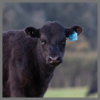
Investigating methods for reducing enteric methane emissions from ruminant livestock are important to reduce environmental impacts and improving production efficiency through reduced energy losses. This experiment evaluated the effects of increasing proportion of rhizoma peanut hay (a C3 legume) into bahiagrass hay (a C4 grass) on intake and methane production in beef steers.
Read more
-

Aug
24
Interpretive Summary: Duration of ergovaline exposure influences serotonin-mediated vasoactivity of bovine mesenteric vasculature
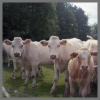
Consumption of ergot alkaloids found in endophyte-infected tall fescue can lead to symptoms of fescue toxicosis, such as vasoconstriction, in ruminant livestock species. Ergovaline is one of the primary ergot alkaloids responsible for causing vasoconstriction when toxic varieties of fescue are consumed.
Read more
-

Aug
24
Interpretive Summary: Endocrine changes during the peripartal period related to colostrogenesis in mammalian species
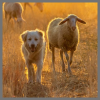
This manuscript reviews and compares hormonal and functional changes occurring in the conceptus (embryo and its extra-embryonic membranes) and their effects on the mammary gland during development from pregnancy to colostrum formation and milk production in multiple mammalian species. Declining activity of gestagens at the end of pregnancy is crucial to allow for both parturition and onset of milk production in most mammals.
Read more
-

Aug
24
Interpretive Summary: Metagenomics analysis reveals the performance of homo- and heterofermentative lactic acid bacteria in alfalfa silage fermentation, bacterial community, and functional profiles

Current studies are aimed towards utilizing certain lactic acid bacteria (LAB) strains with high-yielding beneficial organic acid production for enhancing the quality of forages during preservation (otherwise known as ensiling) and to improve animal feed production.
Read more
-

Aug
24
Interpretive Summary: Melatonin supplementation promotes muscle fiber hypertrophy and regulates lipid metabolism of skeletal muscle in weaned piglets
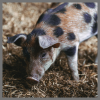
Due to its extensive biological functions, melatonin has been widely used in animal production in recent years. The purpose of this study was to investigate the effects of melatonin on growth performance, muscle development, and lipid metabolism of weaned piglets.
Read more
-

Aug
17
Interpretive Summary: Forages and Pastures Symposium: revisiting mechanisms, methods, and models for altering forage cell wall utilization for ruminants

The underlying principles of forage cell wall utilization by ruminants have been known for over 50 years, but a significant amount of knowledge of the structure and synthesis of critical components of the plant cell wall, mechanisms and methods to alter its digestibility, and assessment techniques to quantify its components as well as their fermentability has been accumulated in the last 30 years.
Read more
-

Aug
17
Interpretive Summary: Effects of dietary zinc/copper ratios on the metabolism of zinc and copper in weaned pigs
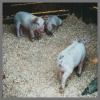
Zinc oxide and copper sulfate are commonly used as growth promoters and alternatives to antibiotics to prevent diarrhea in weaned piglets but their use in post-weaning pigs diets has been challenged due to environmental issues and concerns related to bacterial resistance to antibiotics and heavy metals.
Read more
-

Aug
17
Interpretive Summary: Dietary supplementation of Ocimum gratissimum improves growth performance and immune response in broilers under high ambient temperature

Ocimum gratissimum (OG) was found to have immunity boosting effect on Taiwan country chickens and broiler chickens raised in moderate ambient temperature in previous studies, and the current study investigates its potential on broilers raised in high ambient temperature.
Read more
-

Aug
17
Interpretive Summary: Relationships between body- and udder-related type traits with somatic cell counts and potential use for an early selection method for water buffaloes (Bubalus bubalis)
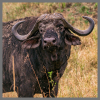
Some type traits (TTs) have been reported to affect somatic cell count (SCC) in bovine milk, which result in mastitis to some extent, but the correlation between SCC and TTs of water buffalo has been poorly understood. Here, a total of 1908 records from 678 buffaloes were investigated.
Read more
-

Aug
17
Interpretive Summary: Transcriptomic analysis of ovarian follicles uncovers the crucial genes relevant to follicle selection and preovulatory hierarchy in hens

Chicken ovarian follicle development undergoes follicle recruitment, prehierarchy, follicle selection, preovulatory/hierarchy, and finally ovulation. The follicle selection and preovulatory hierarchy play a vital role in egg production of hens. However, underlying the mechanism of the key genes involved in these developmental events remains largely unknown.
Read more
 AugInterpretive Summary: Dairy groups comment on the FDA’s draft guidelines for plant milk-alternative labeling
AugInterpretive Summary: Dairy groups comment on the FDA’s draft guidelines for plant milk-alternative labeling The National Milk Producers Federation (NMPF) and the International Dairy Foods Association (IDFA) have submitted public comments on the United States Food and Drug Administration’s (FDA’s) draft guidance for plant milk-alternative labeling.
The National Milk Producers Federation (NMPF) and the International Dairy Foods Association (IDFA) have submitted public comments on the United States Food and Drug Administration’s (FDA’s) draft guidance for plant milk-alternative labeling. AugInterpretive Summary: FDA request input on antimicrobial use in animals
AugInterpretive Summary: FDA request input on antimicrobial use in animals The United States Food and Drug Administration (FDA) is seeking public comments on a new report, which discusses a potential framework for establishing a public-private partnership (PPP) to collect and analyze antimicrobial use (AMU) data from food-producing animals. The report was created for the FDA by the Reagan-Udall Foundation (the Foundation) and summarizes the work completed over a multi-year cooperative agreement funded by the FDA.
The United States Food and Drug Administration (FDA) is seeking public comments on a new report, which discusses a potential framework for establishing a public-private partnership (PPP) to collect and analyze antimicrobial use (AMU) data from food-producing animals. The report was created for the FDA by the Reagan-Udall Foundation (the Foundation) and summarizes the work completed over a multi-year cooperative agreement funded by the FDA. AugInterpretive Summary: Lawsuit filed against Massachusetts’ Question 3
AugInterpretive Summary: Lawsuit filed against Massachusetts’ Question 3 A group of pork producers have filed a lawsuit in Massachusetts against the Act to Prevent Cruelty to Farm Animals (Question 3). Passed by voters in November 2016, Question 3 imposes confinement requirements on out-of-state pork producers and prohibits the sale of pork meat within the state from offspring of an animal confined in a manner inconsistent with Massachusetts' requirements, regardless of where in the nation the animal was raised.
A group of pork producers have filed a lawsuit in Massachusetts against the Act to Prevent Cruelty to Farm Animals (Question 3). Passed by voters in November 2016, Question 3 imposes confinement requirements on out-of-state pork producers and prohibits the sale of pork meat within the state from offspring of an animal confined in a manner inconsistent with Massachusetts' requirements, regardless of where in the nation the animal was raised. AugInterpretive Summary: New bill proposes senior nutrition taskforce
AugInterpretive Summary: New bill proposes senior nutrition taskforce A new bipartisan bill has been introduced to improve nutrition in older adults. The Senior Nutrition Taskforce Act of 2023 would establish an interagency taskforce to address hunger and help seniors, as well as adults with disabilities, better access healthy foods.
A new bipartisan bill has been introduced to improve nutrition in older adults. The Senior Nutrition Taskforce Act of 2023 would establish an interagency taskforce to address hunger and help seniors, as well as adults with disabilities, better access healthy foods. AugInterpretive Summary: Preserving Family Farms Act reintroduced
AugInterpretive Summary: Preserving Family Farms Act reintroduced United States Representatives Jimmy Panetta (D-CA) and Mike Kelly (R-PA) have reintroduced the Preserving Family Farms Act of 2023. The bill would modify tax law, allowing farmers and ranchers to pay estate taxes based on the value of their land for agricultural use.
United States Representatives Jimmy Panetta (D-CA) and Mike Kelly (R-PA) have reintroduced the Preserving Family Farms Act of 2023. The bill would modify tax law, allowing farmers and ranchers to pay estate taxes based on the value of their land for agricultural use. AugInterpretive Summary: Some of the Endangered Species Act’s listings will soon be modified
AugInterpretive Summary: Some of the Endangered Species Act’s listings will soon be modified Two resolutions to nullify the Biden Administration’s Endangered Species Act listings have passed the Senate and the House of Representatives and will now go to the President’s desk for signature. The two listings would nullify the lesser prairie chicken listing and the northern long-eared bat listing. Matters of the Endangered Species Act are typically left to the United States Fish and Wildlife Service and the National Marine Fisheries Service, to decide which animals and plants to list as endangered or threatened and how to rebuild their populations.
Two resolutions to nullify the Biden Administration’s Endangered Species Act listings have passed the Senate and the House of Representatives and will now go to the President’s desk for signature. The two listings would nullify the lesser prairie chicken listing and the northern long-eared bat listing. Matters of the Endangered Species Act are typically left to the United States Fish and Wildlife Service and the National Marine Fisheries Service, to decide which animals and plants to list as endangered or threatened and how to rebuild their populations. AugInterpretive Summary: The Farmland Security Act of 2023 is introduced
AugInterpretive Summary: The Farmland Security Act of 2023 is introduced United States Senators Tammy Baldwin (D-WI) and Chuck Grassley (R-IA) introduced a new bill, designed to increase the transparency and oversight of foreign ownership in America’s agricultural industry. The Farmland Security Act of 2023 builds on the Farmland Security Act of 2022, by ensuring that all foreign investors who buy American agricultural land report their holdings and strengthens the penalties for those who evade the required filing.
United States Senators Tammy Baldwin (D-WI) and Chuck Grassley (R-IA) introduced a new bill, designed to increase the transparency and oversight of foreign ownership in America’s agricultural industry. The Farmland Security Act of 2023 builds on the Farmland Security Act of 2022, by ensuring that all foreign investors who buy American agricultural land report their holdings and strengthens the penalties for those who evade the required filing. AugInterpretive Summary: US to provide relief for Ukrainian farmers
AugInterpretive Summary: US to provide relief for Ukrainian farmers Through the Agriculture Resilience Initiative (AGRI)- Ukraine, the United States announced it will provide $250 million in aid to Ukrainian agriculture producers and farmers. AGRI- Ukraine is an initiative started last year to support Ukrainian agriculture exports and combat global food security issues exacerbated by the Russian invasion.
Through the Agriculture Resilience Initiative (AGRI)- Ukraine, the United States announced it will provide $250 million in aid to Ukrainian agriculture producers and farmers. AGRI- Ukraine is an initiative started last year to support Ukrainian agriculture exports and combat global food security issues exacerbated by the Russian invasion. AugInterpretive Summary: USDA to increase competition in agriculture sector
AugInterpretive Summary: USDA to increase competition in agriculture sector The United States Department of Agriculture (USDA) has announced a partnership with attorney generals in 31 states and the District of Columbia to enhance competition and protect consumers in food and agricultural markets, including in grocery, meat, and poultry processing, and other markets. The partnership will assist state attorneys general in tackling anticompetitive market structures in agriculture and related industries that are raising prices and limiting choices for consumers and producers.
The United States Department of Agriculture (USDA) has announced a partnership with attorney generals in 31 states and the District of Columbia to enhance competition and protect consumers in food and agricultural markets, including in grocery, meat, and poultry processing, and other markets. The partnership will assist state attorneys general in tackling anticompetitive market structures in agriculture and related industries that are raising prices and limiting choices for consumers and producers. AugInterpretive Summary: The effects of stocking density on behavior and biological functioning of penned sheep under continuous heat load conditions
AugInterpretive Summary: The effects of stocking density on behavior and biological functioning of penned sheep under continuous heat load conditions There is a high demand for Australian sheep to be exported to the Middle East, and for live export voyages which depart during an Australian winter, heat, and humidity increase rapidly as ships cross the equator and approach destination countries. Concern about sheep becoming heat stressed during these voyages has increased, and industry attention has focused on the potential role of stocking density in determining heat stress risk in this context.
There is a high demand for Australian sheep to be exported to the Middle East, and for live export voyages which depart during an Australian winter, heat, and humidity increase rapidly as ships cross the equator and approach destination countries. Concern about sheep becoming heat stressed during these voyages has increased, and industry attention has focused on the potential role of stocking density in determining heat stress risk in this context. AugInterpretive Summary: Methane emissions and 13C composition from beef steers consuming binary C3–C4 diets
AugInterpretive Summary: Methane emissions and 13C composition from beef steers consuming binary C3–C4 diets Investigating methods for reducing enteric methane emissions from ruminant livestock are important to reduce environmental impacts and improving production efficiency through reduced energy losses. This experiment evaluated the effects of increasing proportion of rhizoma peanut hay (a C3 legume) into bahiagrass hay (a C4 grass) on intake and methane production in beef steers.
Investigating methods for reducing enteric methane emissions from ruminant livestock are important to reduce environmental impacts and improving production efficiency through reduced energy losses. This experiment evaluated the effects of increasing proportion of rhizoma peanut hay (a C3 legume) into bahiagrass hay (a C4 grass) on intake and methane production in beef steers. AugInterpretive Summary: Duration of ergovaline exposure influences serotonin-mediated vasoactivity of bovine mesenteric vasculature
AugInterpretive Summary: Duration of ergovaline exposure influences serotonin-mediated vasoactivity of bovine mesenteric vasculature Consumption of ergot alkaloids found in endophyte-infected tall fescue can lead to symptoms of fescue toxicosis, such as vasoconstriction, in ruminant livestock species. Ergovaline is one of the primary ergot alkaloids responsible for causing vasoconstriction when toxic varieties of fescue are consumed.
Consumption of ergot alkaloids found in endophyte-infected tall fescue can lead to symptoms of fescue toxicosis, such as vasoconstriction, in ruminant livestock species. Ergovaline is one of the primary ergot alkaloids responsible for causing vasoconstriction when toxic varieties of fescue are consumed. AugInterpretive Summary: Endocrine changes during the peripartal period related to colostrogenesis in mammalian species
AugInterpretive Summary: Endocrine changes during the peripartal period related to colostrogenesis in mammalian species This manuscript reviews and compares hormonal and functional changes occurring in the conceptus (embryo and its extra-embryonic membranes) and their effects on the mammary gland during development from pregnancy to colostrum formation and milk production in multiple mammalian species. Declining activity of gestagens at the end of pregnancy is crucial to allow for both parturition and onset of milk production in most mammals.
This manuscript reviews and compares hormonal and functional changes occurring in the conceptus (embryo and its extra-embryonic membranes) and their effects on the mammary gland during development from pregnancy to colostrum formation and milk production in multiple mammalian species. Declining activity of gestagens at the end of pregnancy is crucial to allow for both parturition and onset of milk production in most mammals. AugInterpretive Summary: Metagenomics analysis reveals the performance of homo- and heterofermentative lactic acid bacteria in alfalfa silage fermentation, bacterial community, and functional profiles
AugInterpretive Summary: Metagenomics analysis reveals the performance of homo- and heterofermentative lactic acid bacteria in alfalfa silage fermentation, bacterial community, and functional profiles Current studies are aimed towards utilizing certain lactic acid bacteria (LAB) strains with high-yielding beneficial organic acid production for enhancing the quality of forages during preservation (otherwise known as ensiling) and to improve animal feed production.
Current studies are aimed towards utilizing certain lactic acid bacteria (LAB) strains with high-yielding beneficial organic acid production for enhancing the quality of forages during preservation (otherwise known as ensiling) and to improve animal feed production. AugInterpretive Summary: Melatonin supplementation promotes muscle fiber hypertrophy and regulates lipid metabolism of skeletal muscle in weaned piglets
AugInterpretive Summary: Melatonin supplementation promotes muscle fiber hypertrophy and regulates lipid metabolism of skeletal muscle in weaned piglets Due to its extensive biological functions, melatonin has been widely used in animal production in recent years. The purpose of this study was to investigate the effects of melatonin on growth performance, muscle development, and lipid metabolism of weaned piglets.
Due to its extensive biological functions, melatonin has been widely used in animal production in recent years. The purpose of this study was to investigate the effects of melatonin on growth performance, muscle development, and lipid metabolism of weaned piglets. AugInterpretive Summary: Forages and Pastures Symposium: revisiting mechanisms, methods, and models for altering forage cell wall utilization for ruminants
AugInterpretive Summary: Forages and Pastures Symposium: revisiting mechanisms, methods, and models for altering forage cell wall utilization for ruminants The underlying principles of forage cell wall utilization by ruminants have been known for over 50 years, but a significant amount of knowledge of the structure and synthesis of critical components of the plant cell wall, mechanisms and methods to alter its digestibility, and assessment techniques to quantify its components as well as their fermentability has been accumulated in the last 30 years.
The underlying principles of forage cell wall utilization by ruminants have been known for over 50 years, but a significant amount of knowledge of the structure and synthesis of critical components of the plant cell wall, mechanisms and methods to alter its digestibility, and assessment techniques to quantify its components as well as their fermentability has been accumulated in the last 30 years. AugInterpretive Summary: Effects of dietary zinc/copper ratios on the metabolism of zinc and copper in weaned pigs
AugInterpretive Summary: Effects of dietary zinc/copper ratios on the metabolism of zinc and copper in weaned pigs Zinc oxide and copper sulfate are commonly used as growth promoters and alternatives to antibiotics to prevent diarrhea in weaned piglets but their use in post-weaning pigs diets has been challenged due to environmental issues and concerns related to bacterial resistance to antibiotics and heavy metals.
Zinc oxide and copper sulfate are commonly used as growth promoters and alternatives to antibiotics to prevent diarrhea in weaned piglets but their use in post-weaning pigs diets has been challenged due to environmental issues and concerns related to bacterial resistance to antibiotics and heavy metals. AugInterpretive Summary: Dietary supplementation of Ocimum gratissimum improves growth performance and immune response in broilers under high ambient temperature
AugInterpretive Summary: Dietary supplementation of Ocimum gratissimum improves growth performance and immune response in broilers under high ambient temperature Ocimum gratissimum (OG) was found to have immunity boosting effect on Taiwan country chickens and broiler chickens raised in moderate ambient temperature in previous studies, and the current study investigates its potential on broilers raised in high ambient temperature.
Ocimum gratissimum (OG) was found to have immunity boosting effect on Taiwan country chickens and broiler chickens raised in moderate ambient temperature in previous studies, and the current study investigates its potential on broilers raised in high ambient temperature. AugInterpretive Summary: Relationships between body- and udder-related type traits with somatic cell counts and potential use for an early selection method for water buffaloes (Bubalus bubalis)
AugInterpretive Summary: Relationships between body- and udder-related type traits with somatic cell counts and potential use for an early selection method for water buffaloes (Bubalus bubalis) Some type traits (TTs) have been reported to affect somatic cell count (SCC) in bovine milk, which result in mastitis to some extent, but the correlation between SCC and TTs of water buffalo has been poorly understood. Here, a total of 1908 records from 678 buffaloes were investigated.
Some type traits (TTs) have been reported to affect somatic cell count (SCC) in bovine milk, which result in mastitis to some extent, but the correlation between SCC and TTs of water buffalo has been poorly understood. Here, a total of 1908 records from 678 buffaloes were investigated. AugInterpretive Summary: Transcriptomic analysis of ovarian follicles uncovers the crucial genes relevant to follicle selection and preovulatory hierarchy in hens
AugInterpretive Summary: Transcriptomic analysis of ovarian follicles uncovers the crucial genes relevant to follicle selection and preovulatory hierarchy in hens Chicken ovarian follicle development undergoes follicle recruitment, prehierarchy, follicle selection, preovulatory/hierarchy, and finally ovulation. The follicle selection and preovulatory hierarchy play a vital role in egg production of hens. However, underlying the mechanism of the key genes involved in these developmental events remains largely unknown.
Chicken ovarian follicle development undergoes follicle recruitment, prehierarchy, follicle selection, preovulatory/hierarchy, and finally ovulation. The follicle selection and preovulatory hierarchy play a vital role in egg production of hens. However, underlying the mechanism of the key genes involved in these developmental events remains largely unknown.



